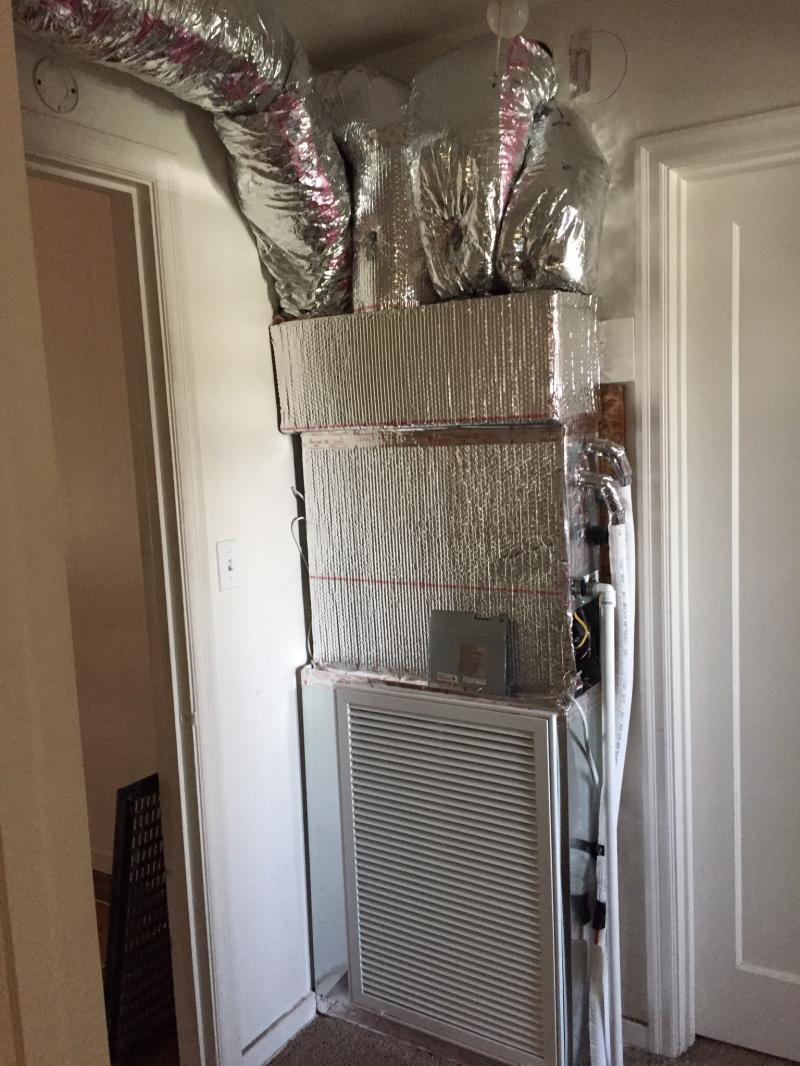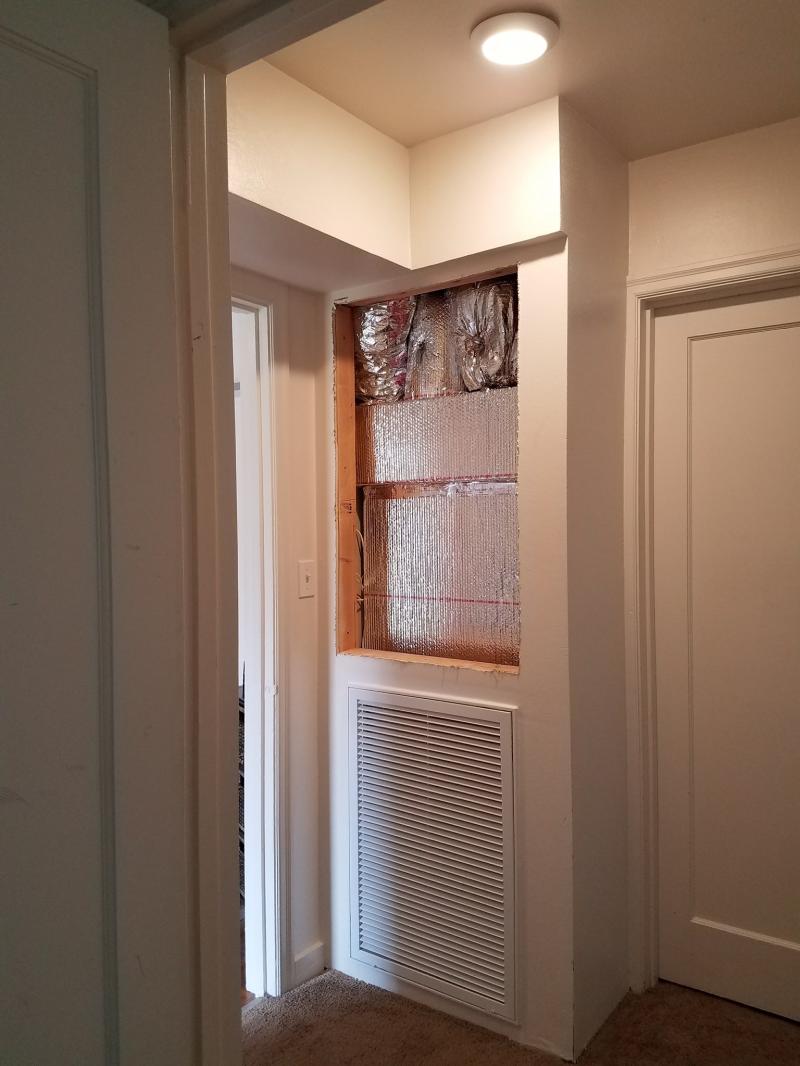Of the mini-duct cassette types,
Fujitsu -xxRLFCDs are hands-down the easiest to work with, due to the better blower motor and big turn down ratio, and the fact that they can be mounted vertically (in a 5-7 square foot "utility closet", if you like). They only have specified capacity ratings down to -5F, but they still keep cranking even at -25F (they just don't specify the output at any temperature below -5F.)
Since there are no resistance heating backup element options for mini-duct minisplits it's important that they are sized to be able handle the load of the zone at +5F, which could be cutting it close. Some 2x4 framed 1400' houses will have heat loads less than 21,600 BTU/hr @ +5F, but many will be higher than that. Run some careful (but aggressive) load numbers on the first floor only (do the basement separately)to see if there is any way it would work for the whole first floor. Since code requirements for heating to 68F at the 99% outside design temperatures apply only to "habitable" spaces, you can get some benefit from not directly heating say, the laundry room or pantry, but would be required to directly heat the bedrooms, living room, kitchen, etc. . Online calculators such as loadcalc aren't going to be accurate enough to fine-tune it that closely, but pro-tools will. It's sometimes cheaper to do some amount of insulation/window/air sealing upgrade to get it to duck in under the wire than to go with a bigger, usually much more expensive model (or breaking it into two zones and going with two mini-splits for the first floor only.)
This is a 1.5 ton Fujitsu mounted vertically in a house in CA:
The big grille is the return (no ducts). The cassette itself is a couple feet long, mounted between the return plenum and a very short 12-15" tall supply plenum where all the flex is hooked up. (If doing it that way install a narrow access cupboard-door or removable panel for servicing the condensate drain and refrigerant line hookups.)
The AHRI "rated" output at which it's efficiency is tested at +17F was 21,600 BTU/hr. It still has that much capacity at max speed at +5F , and still more than 19,000 BTU/hr @ -5F (more than than 100% of it's nominal 18,000 BTU/hr cooling rating), which is the lowest temperature at which the specify the capacity.
Of the full air handler types the Mitsubishi PVA air handlers with
PUZ HAxx series compressors rule, but they're expensive as hell, and only have about a 2.5:1 turn down ratio. It's target market is small commercial buildings, and comes in only three models with ratings down at -25C/ -13F. The smallest is is a
3-tonner, capable of 38K @ +5F, and almost surely enough (but probably too much) for your actual loads.
The other Mitsubishi full-size air handler units with a specified capacity that low are the non-modulating MVZ air handlers that are compatible with their MXZ series "Hyper Heating" multi-zone compressors. You're probably looking at a
MVZ-A24 or
MVA-A30 for the upstairs zone (they make a 3 tonner too, if need be), and an FH06 wall-coil for heating the basement. (MXZ compressors need to have at least two zones hooked up to operate correctly.) The FH06 is good for 8700 BTU/hr @ +5F (probably well over the design heat load of the basement) when hooked up to sufficient compressor. You'd be looking at either the
MXZ-3C30NAHZ (good for 28,600BTU/hr @ +5F) or the
MXZ-4C36NAHZ (good for 45,000 BTU/hr @ +5F, a pretty big jump.) They're not cheap either, but they're cheaper than the PVA/PUZ.
The full size air handler units all have electric heat strip options for covering the short fall for excess load on the rare -10F days. It's not insane to even slightly undersize them for the 99% load and burn some heat strip, as long as it can be heat pump only at the 95th percentile temperature bin. That way the duty cycle stays higher (= higher heat pump efficiency), at the expense of burning a bit extra power (or letting the temperature in the house slip a few degrees) 1-4% of the time.
Mitsubishi has mini-duct units too, but they only have capacity ratings at -13F when married to an MXZ compressor, not a standalone where they would modulate rather than cycle. The blowers are pretty wimpy compared to Fujitsu's and they can only be mounted horizontally. Married to a dedicated compressor they don't have the "Hyper Heating" capacity, and even at +17F the
KA18's capacity is well below that of Fujtisu's -18RLFCD.
There are other options. The
NEEP organization maintains
a fairly complete spreadsheet of cold-climate heat pumps, which way over in column "AM" lists the max capacity at +5F, and in column "BE" the max capacity at -5F.


